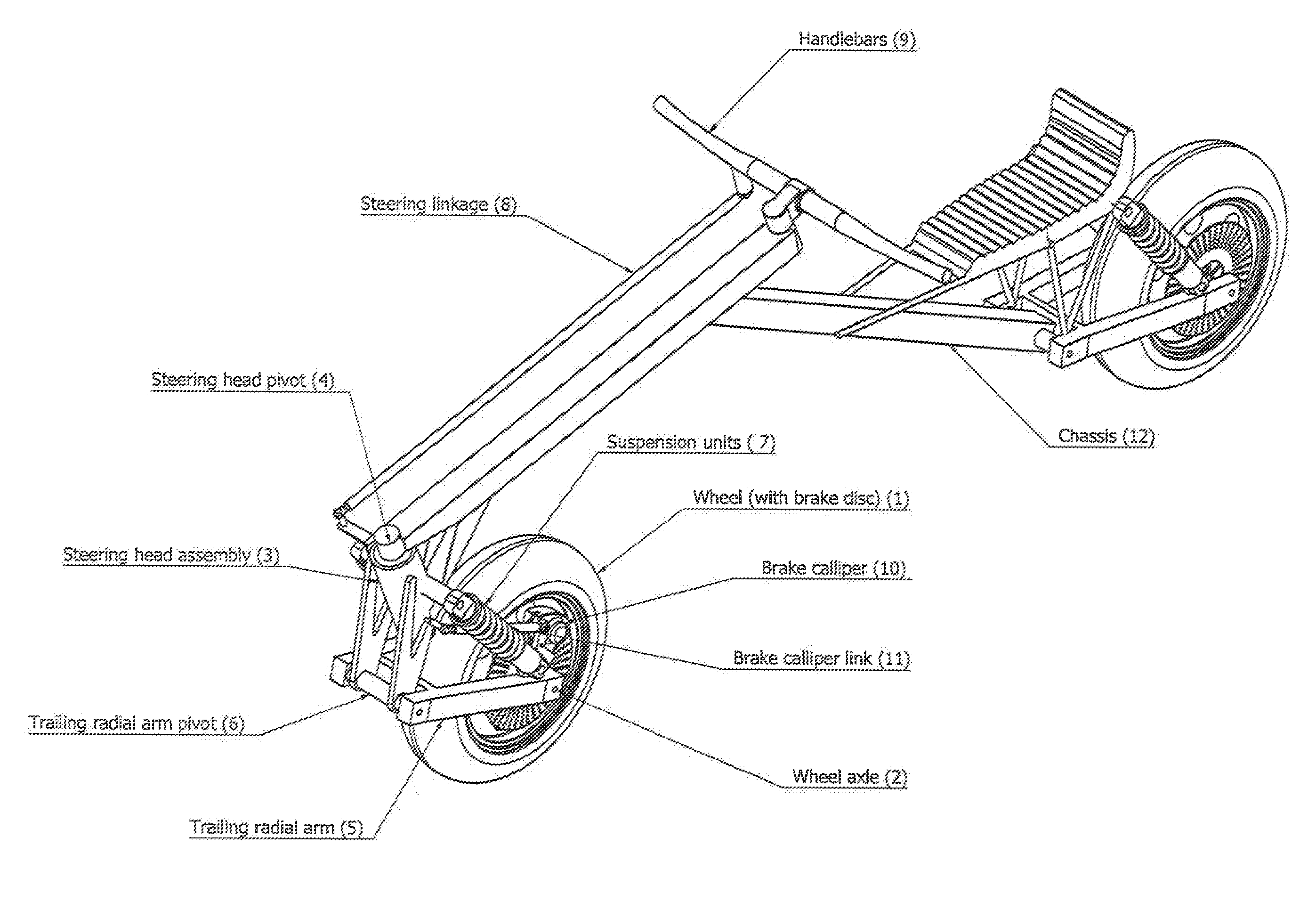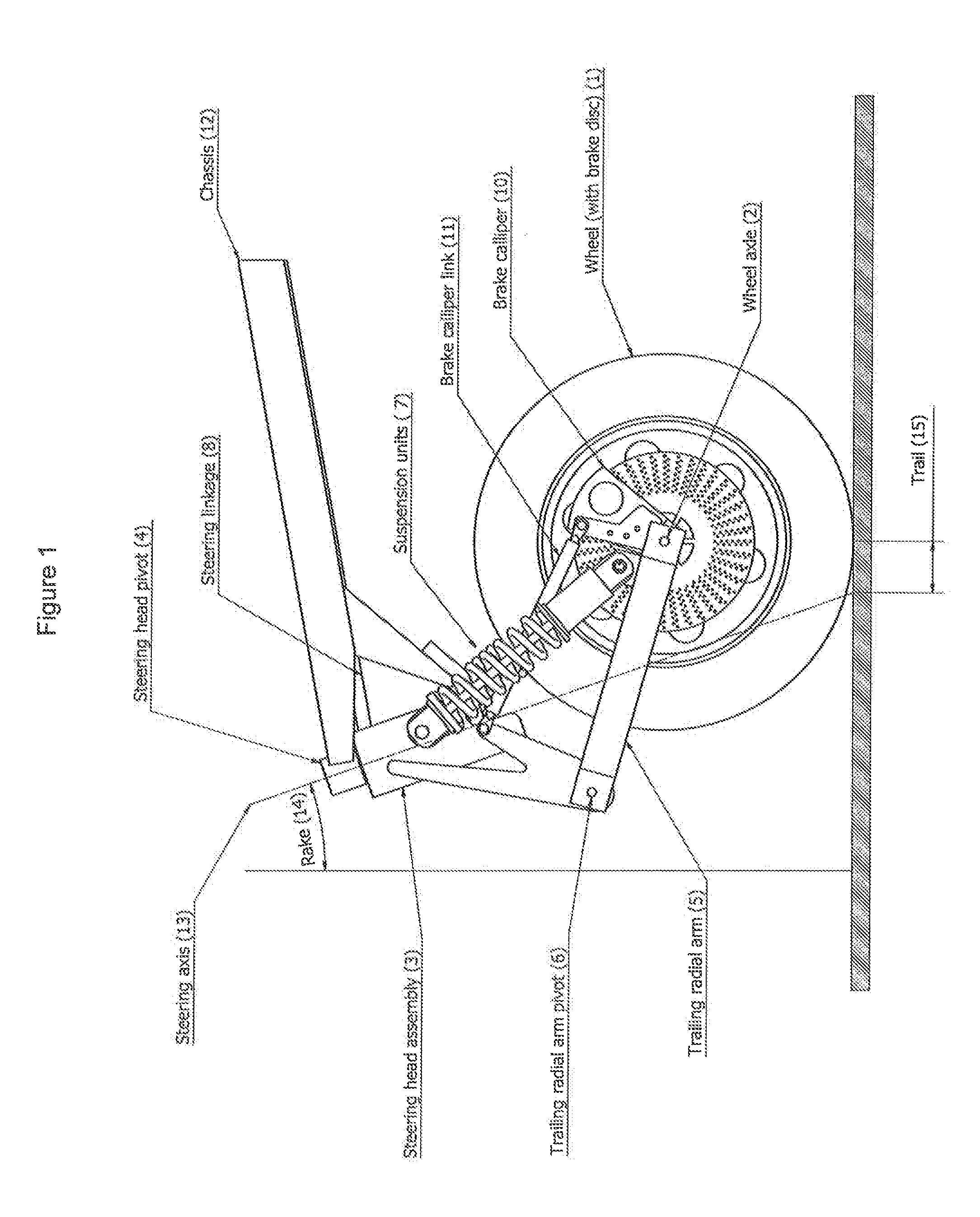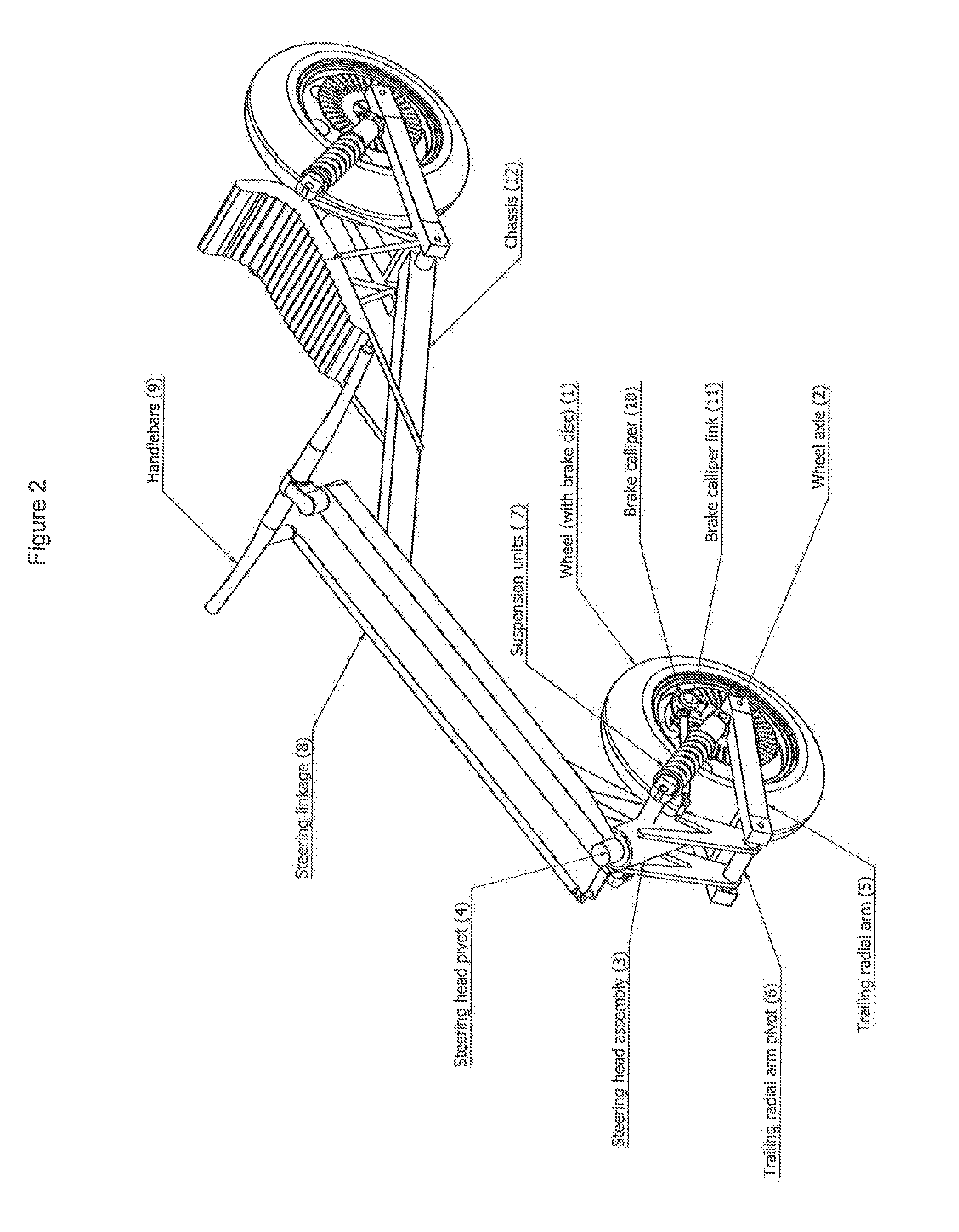Motorbike steering and suspension system
a suspension system and motorbike technology, applied in the direction of steering devices, axle suspensions, bicycle brakes, etc., can solve the problems of power consumption, affecting the balance and stability of the machine, and the front suspension tends to compress during the compression period, so as to improve feedback and control, the effect of more responsive steering and maintaining stability
- Summary
- Abstract
- Description
- Claims
- Application Information
AI Technical Summary
Benefits of technology
Problems solved by technology
Method used
Image
Examples
Embodiment Construction
[0017]The figures show a steering and suspension system comprising front wheel assembly comprising a wheel with brake disc 1, a steering head assembly 3, a steering head pivot 4, a trailing radial arm 5, a pivot joint 6, suspension units 7, a steering linkage 8, handlebars 9, a brake calliper 10, a brake calliper link 11 and a chassis 12.
[0018]The trailing radial arm 5 is connected to the wheel axle 2 at one end and to the steering head assembly 3 at the other end. The trailing radial arm 5 and the steering head assembly 3 are joined by an approximately horizontal, pivot joint 6. The steering head assembly 3 is connected to the motorbike chassis 12 at the steering head pivot 4 which acts as an inclined pivot joint. The inclined pivot joint defines the angle or rake and position of the steering axis 13. The rake 14 and trail 15 are in turn defined by the geometry of the above components. The suspension units 7 are fitted between the live end of the radial arm 5 and the steering head ...
PUM
 Login to View More
Login to View More Abstract
Description
Claims
Application Information
 Login to View More
Login to View More - R&D
- Intellectual Property
- Life Sciences
- Materials
- Tech Scout
- Unparalleled Data Quality
- Higher Quality Content
- 60% Fewer Hallucinations
Browse by: Latest US Patents, China's latest patents, Technical Efficacy Thesaurus, Application Domain, Technology Topic, Popular Technical Reports.
© 2025 PatSnap. All rights reserved.Legal|Privacy policy|Modern Slavery Act Transparency Statement|Sitemap|About US| Contact US: help@patsnap.com



